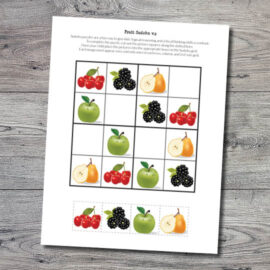This post may contain affiliate ads at no cost to you. See my disclosures for more information.
After my kids and I sprouted seeds to see what the process entailed, we decided to carry out a series of seed experiments to learn more about seeds. Our seed experiments were designed to answer questions about what kinds of conditions seeds grow best in.
In three previous posts I shared the results of our experiments that asked the questions: “Do seeds need light to grow?“, “What temperature do seeds like?“, and “Do seeds need air to grow?“
In this fourth seed experiment, we addressed the question: “Do seeds need their seed coat to grow?”
Note: For more seed activities your kids will love, see my Botany Unit Study page.
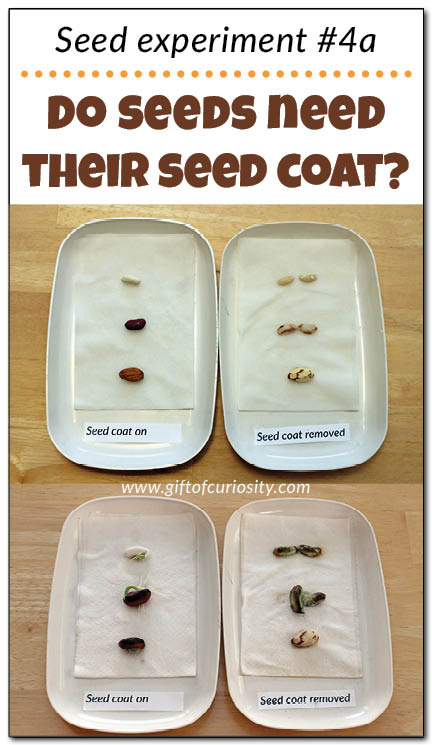
For any experiment, it is important to set up conditions so that the only difference between the conditions is related to what you want to test. Because we wanted to test how well seeds grow with and without their seed coat on, it was important that all of the growing conditions for our seeds be the same EXCEPT for whether the seeds had their seed coats.
A seed coat is the outer covering of a seed. I used a piece of sandpaper to remove the seed coat of three different seeds: a bush bean seed, a kidney bean seed, and an almond seed.
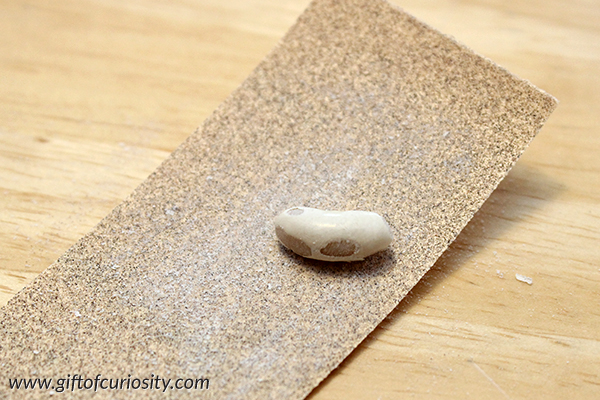
All three seeds we used in this experiment are dicots, meaning they are made of two separate halves. After removing the entire seed coat with the sandpaper, the two halves of the bush bean and kidney bean seeds separated. The almond seed remained intact.
We laid the seeds out onto a damp paper towel. We had to lay the two halves of the bush bean and kidney bean seeds out next to each other as they would not stay together without their seed coat on.
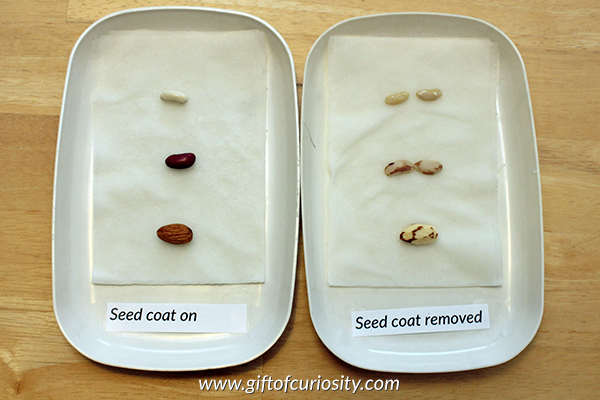
We placed the trays on our kitchen window sill. We then added a second, damp paper towel over the top of the seeds to keep them moist.
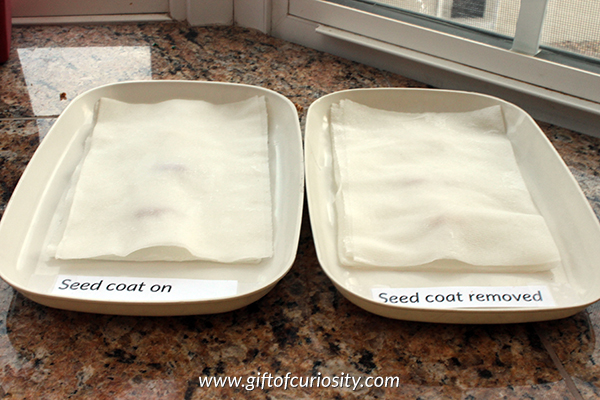
Over the course of one week, we added more water to the paper towels on a daily basis to keep the seeds moist enough to sprout.
After one week, we removed the top layer of paper towel to observe what had happened. Neither almond seed had begun to sprout. But the bush bean and kidney beans seeds that had kept their seed coat on started to sprout (see the left tray in the picture below). None of the seeds that had their seed coats removed started to sprout (see the right tray in the picture below).
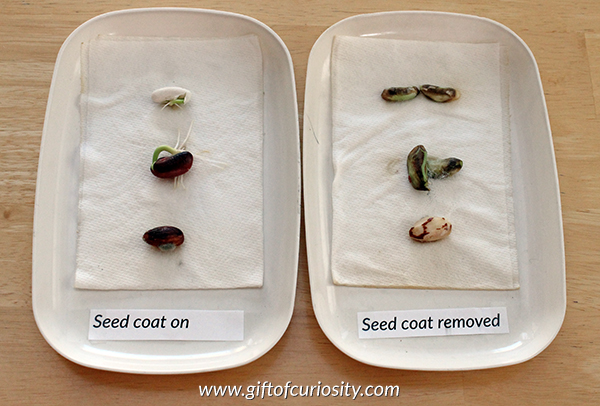
In fact, without their seed coats the seeds had started to grow moldy!
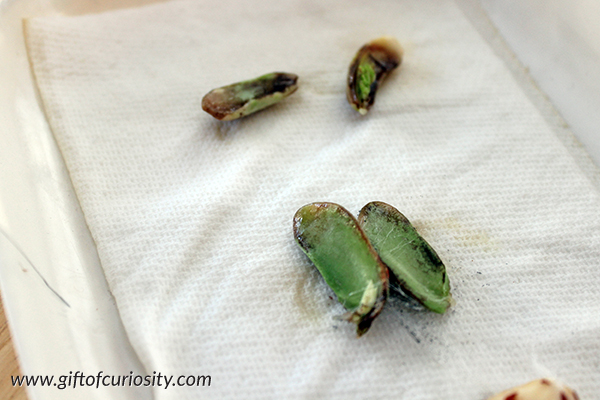
So after conducting this experiment, how would we answer our question “Do seeds need their seed coat to grow?”
We learned that the answer was yes. The seeds with the intact seed coat sprouted normally while the seeds with their seed coats removed with sandpaper failed to sprout or thrive.
However, I did find another group that removed the seed coat in a different manner, and they achieved different results from this study. Check out what they did and how their results compare!
More resources for learning about seeds
More posts about seeds from Gift of Curiosity:
- Books about seeds
- Exploring seeds from packets
- Exploring seeds from nature
- Sprouting seeds
- Seed medallions craft
- Experiment: Do seeds need light to grow?
- Experiment: What temperature do seeds like?
- Experiment: Do seeds need air?
- Experiment: What liquids do seeds like?
For more seed activities your kids will love, see my Botany Unit Study page and my Botany & Gardening Pinterest board.
Follow Katie @ Gift of Curiosity’s board Unit Ideas: Botany & Gardening on Pinterest.



